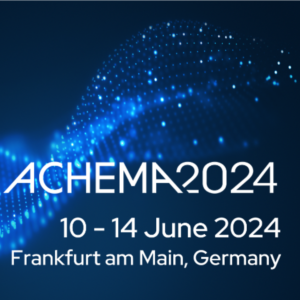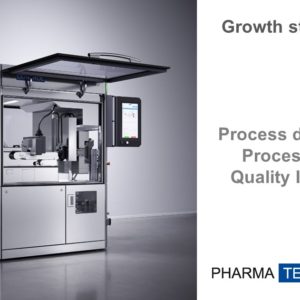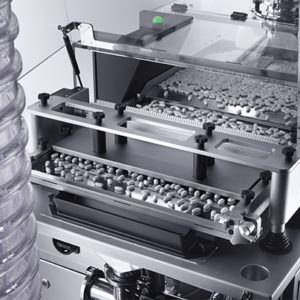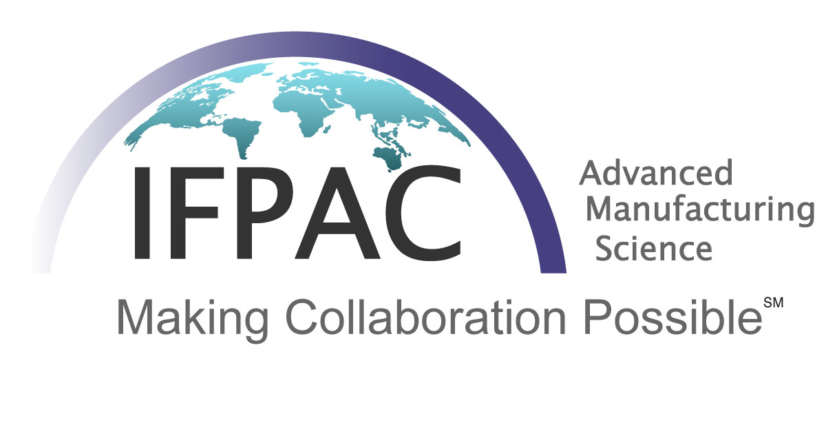 Exhibition | Achema - Frankfurt, Germany - June 10-14, 2024
Exhibition | Achema - Frankfurt, Germany - June 10-14, 2024
Embark on a journey of innovation with us at…
 The role of Quality Control in the Pharmaceutical Industry
The role of Quality Control in the Pharmaceutical Industry
The pharmaceutical solid dose manufacturing process is increasingly fast-moving…
 What is Crucial in the Success of Automatic Visual Inspection?
What is Crucial in the Success of Automatic Visual Inspection?
The Benefits of Automated Visual Inspection over Manual Inspection…
 PHARMA TECHNOLOGY reveals its growth strategy 2025
PHARMA TECHNOLOGY reveals its growth strategy 2025
Pharma Technology, with more than 25 years of experience…
 Demanding superior sorting capabilities for your packaging line
Demanding superior sorting capabilities for your packaging line
The implementation of a tablet sorting device upstream of…
 New partnership in Denmark to represent Pharma Technology
New partnership in Denmark to represent Pharma Technology
We are delighted to share our new collaboration with…

We will take part in the IFPAC-2023 meeting, the major event bringing together experienced professionals and the next generation of leaders to share in discussions, give input and get ideas for the future well-being of the industry. Join your colleagues… the people who are the foundation of Process Analytical Technology (PAT), QbD, Process Understanding & Control, and Real-Time Analytics.
PAT is one of the most exciting and important advanced technology areas meeting both the current challenges, as well as the future needs of industry. Each year the IFPAC Scientific Board consisting of industry, regulatory, and academic leaders works collaboratively to create a comprehensive program that addresses important mainstay topics, as well as the latest trends, technologies and applications.
This year edition will be held June 4-7, 2023 at the Bethesda North Marriot, in North Bethesda, Maryland
Agenda :
Abstract:
Continuous manufacturing in pharmaceutical solid dose processes requires additional inspection, finished tablet data, and process monitoring to confirm a tightly controlled process. Variations in feeding, process parameters, and speeds can impact the finished tablet qualities. Immediate inspection of each unit dose in-line can be utilized to successfully scale up, prevent costly manufacturing deviations, and gain an insight on impacts of parameter changes.
By using Spatially Resolved Near Infrared Spectroscopy (NIR SRS), laser scanning technology, and 3D micro-wave technology, a single in-line unit operation can measure tablet thickness, diameter, length, mass, and the individual Active Pharmaceutical Ingredient (API) fraction at speeds ranging from 20,000 to 120,000 tablets per hour. When combining this information, we can demonstrate individual unit dose information to confirm process control and support a real time release or shortened time between manufacturing and release.
The tests were performed using a CU-120 inspection machine on Diclofenac tablets to measure the individual tablet mass and API fraction continuously. With an average standard of deviation below 0.5 mg, tight control on the process is demonstrated using the CU-120 technology and thus supports a Real Time Release (RTR) strategy.
Biography:
Jordan Carder has a BSc. in Chemical Engineering from Michigan State University. He has spent several years as a Process Engineer within the CPG and Pharmaceutical industries (General Mills, and Perrigo). He is currently employed as a Sales Engineer with Pharma Technology, Inc. He consults with large pharmaceutical clients and CDMOs to help engineer complex OSD handling and inspection solutions tailored to their specific products.
Co-Authors:
– Freddy Vandenbroucke, R&D Project Manager, Pharma Technology
– Francois Bovart, Process Engineer, Pharma Technology
Abstract:
Intelligent automation of pharmaceutical manufacturing suites offers the opportunity to improve the drug and formulation discovery process. The talk will highlight how a high-speed in-line inspection system can greatly enhance the potential of a completely automated development process of a pharmaceutical oral solid dosage (OSD) form from powder to granules to finished tablets.
Pharmaceutical granules containing micronized Paracetamol as active pharmaceutical ingredient (API) were produced on a continuous production line. To generate granules with varying API content, powder blends containing 7.5-9-10-11-12.5% Paracetamol (target values) were prepared, by adapting the amounts of Lactose and MCC, keeping their ratio constant. Moisture and density/particle size were varied by modifying the end point product temperature of drying and the spray air pressure. In total 13 experiments were conducted in duplicate, each in 5 kg batches (26 batches in total).
Subsequently the granules were blended with 1% of magnesium stearate and compressed on a rotary tablet press equipped with a feeder for automatic process development. Besides typical compression parameters, the feeder configuration was automatically varied, while the fill depth was kept constant at 8.0 mm. The tablets were round (diameter: 10 mm), convex, with a debossed marking on one side. The target thickness was 4.2mm.
In total 265 different experiments were generated. The products manufactured during these batches had the following overall properties:
The tablets were inspected on a CU-120 machine capable of 100% testing and sorting of tablets on their thickness via laser scanning, their API fraction via integrated multipoint near-infrared (NIR) spectroscopy, and their mass via 3D microwave resonance technology (3D MRT).
All tablets from the 255 batches (over 90.000 tablets in total) were nondestructively inspected on the CU-120 machine on their thickness, mass, and API content, with at least one sampling per inspected batch.
The thickness of the tablets was measured in line using data provided by laser sensors and interpreted using a proprietary algorithm.
The API fraction of every tablet was consecutively predicted via the application of the NIR model on the run, on spectra collected in-line. The accuracy expected for the content predictions is reported on the chart below (right-hand side). The error margin on the label claim (LC, target value) was about 2.38%.
The mass of each tablet was finally measured with the microwave sensor. To assess the accuracy and the precision of these measurements, the predicted mass of each sampled tablet was compared to its reference mass (returned by the embedded 4-parameter IPC tester).
High-speed in-line inspection can be a key addition for DoE-based and automated development of OSD forms. It provided here fast and valuable data about the produced tablets (data from 90.000 tablets collected in less than 3 days), that could further be correlated with the critical process parameters of every single unit operation involved in the manufacturing process.
This work has been performed using a machine capable of in-line inspection at production scale, batch recoveries and small batch inspection as well, at a very high inspection rate.
The talk will contain the experimental setup, Design of Experiments and the modelling data. The results and obtained accuracies will be discussed.
Biography:
Sven Borchert has a PhD in Chemistry and is working for Pharma Technology as Product Specialist for the Quality Control Division. He previously worked several years on the integration of high-speed inspection technologies with Uhlmann VisioTec, Kraemer Elektronik and ACG, India. He has broad experience in implementing high speed equipment into pharmaceutical production processes, NIR spectroscopy, Raman spectroscopy, PAT, continuous manufacturing…
You can see the full program of this event here.